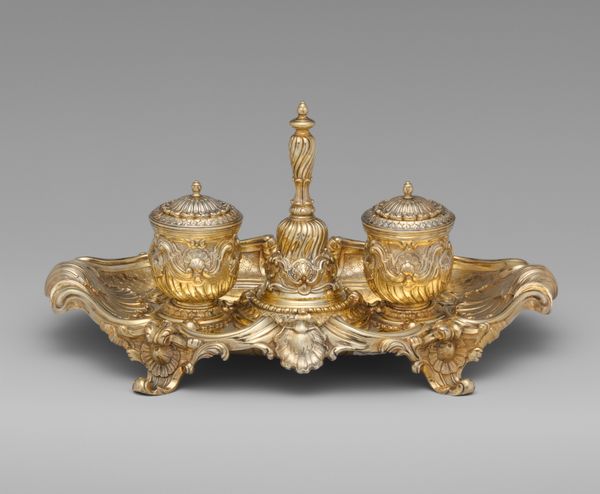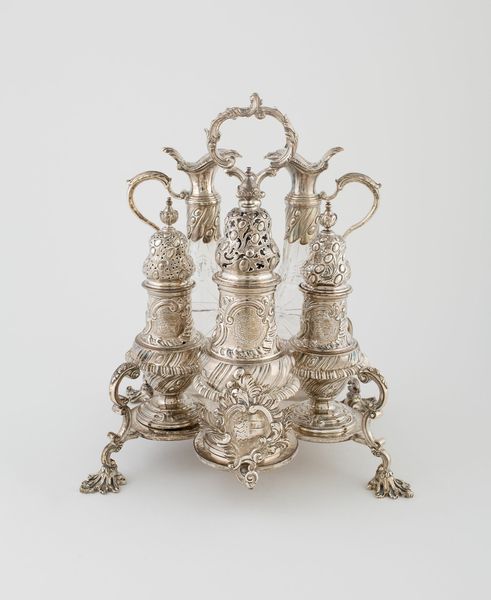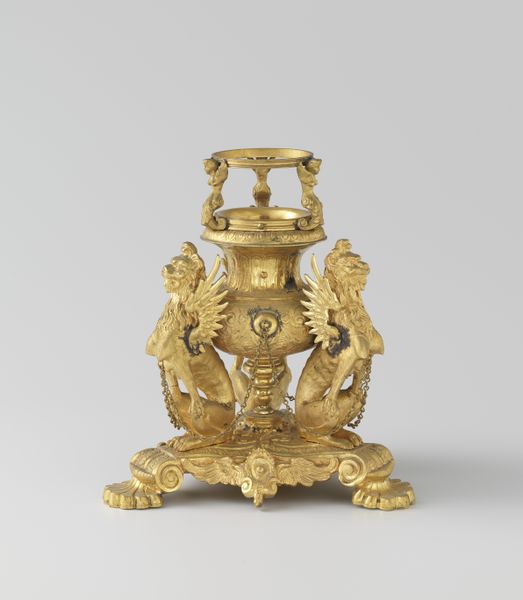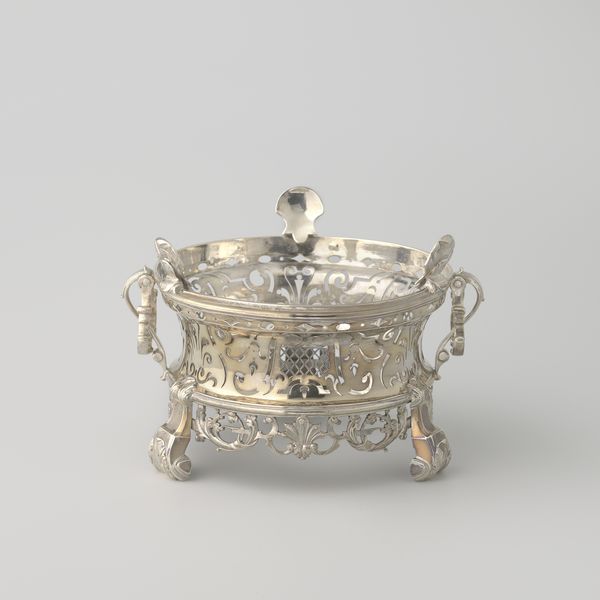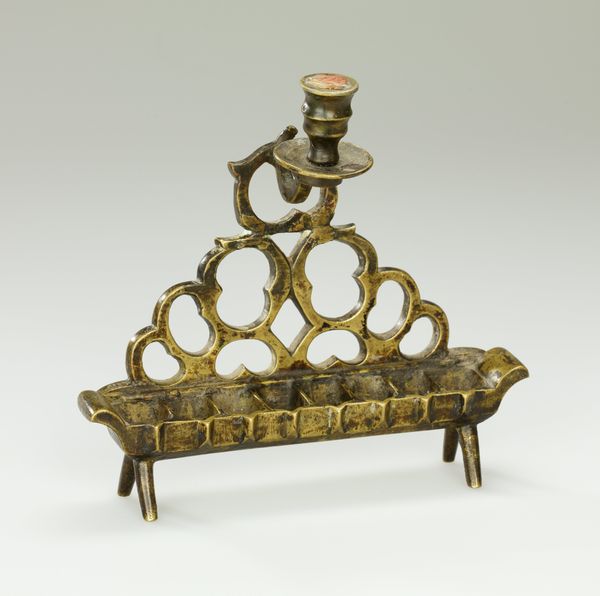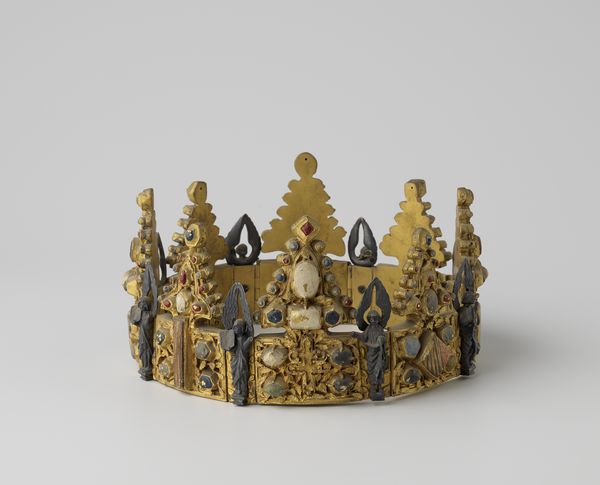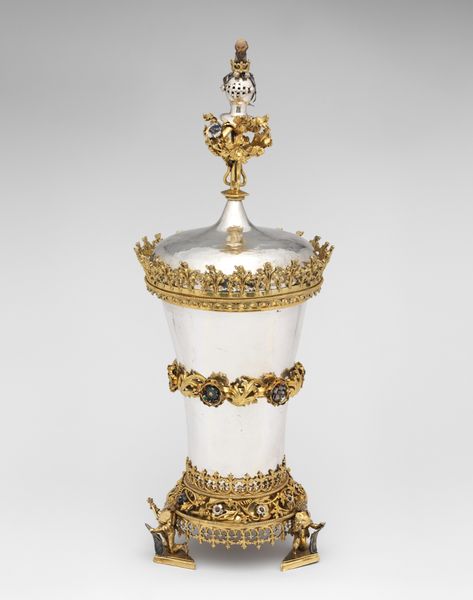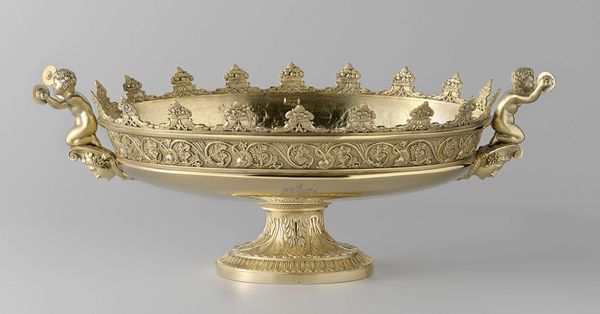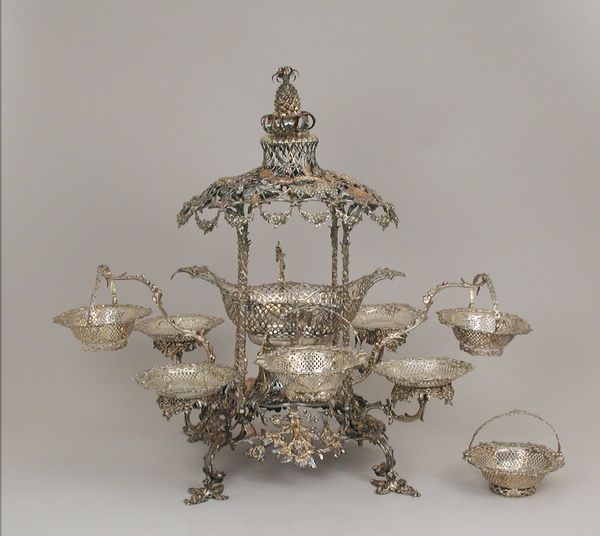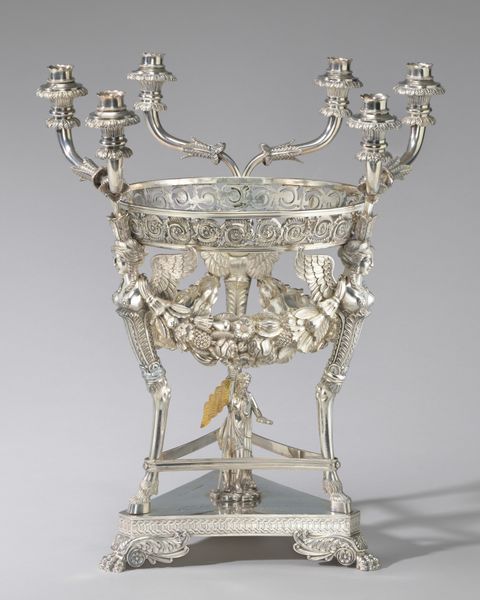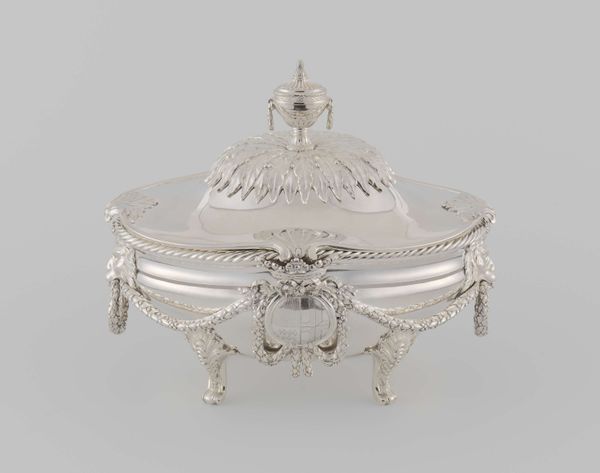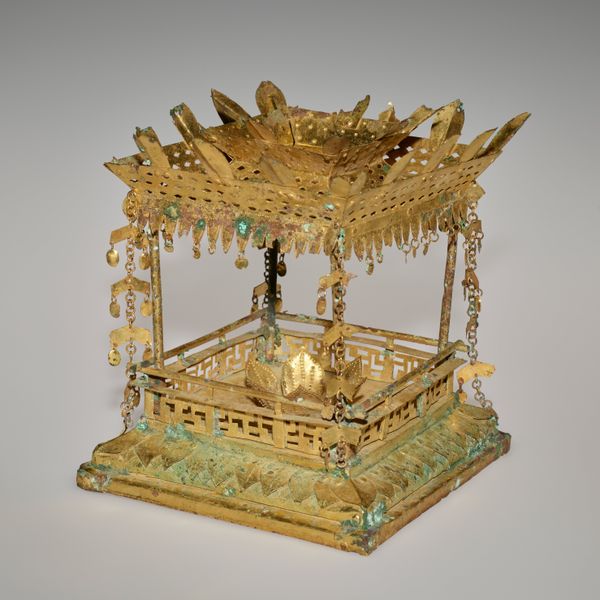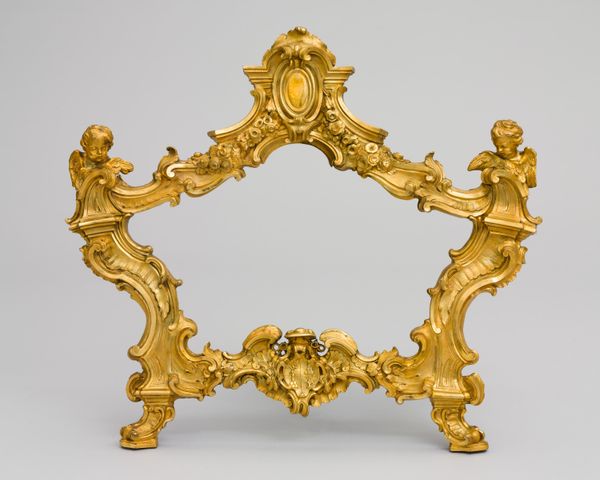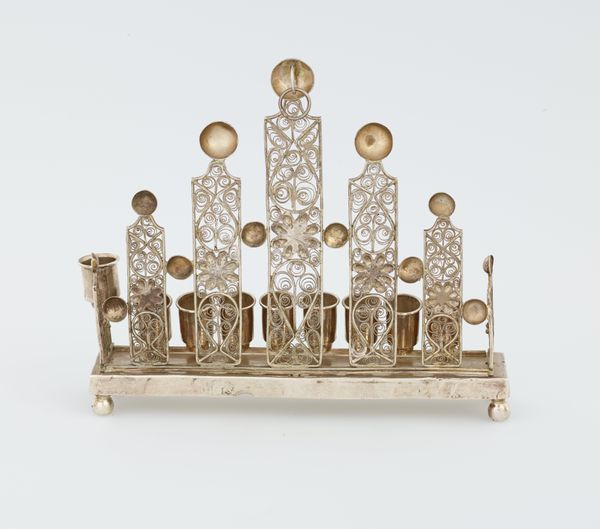
metal, sculpture
#
baroque
#
metal
#
sculpture
#
sculpture
#
decorative-art
Dimensions: height 37.5 cm, width 56.0 cm, depth 40.0 cm
Copyright: Rijks Museum: Open Domain
Here we see a silver tea service and stand made by Johannes Engelbrecht in the early 18th century. At first glance, the piece overwhelms with ornamentation. The symmetry of the design—the curving arms mirroring each other, the balanced placement of cups—suggests a controlled elegance, yet the density of the decoration threatens to destabilize this order. Consider the baroque period, a time when opulence and grandeur reflected social status. Every surface is adorned, leaving no space untouched. The reflective silver amplifies the play of light and shadow, creating a dazzling effect. This tea service embodies the cultural codes of its era, where display and ritual were as important as function. It isn’t merely about serving tea; it's about signifying wealth and taste. Note the way the structure allows the silver spoons to splay in the air, a flourish that elevates the mundane act of tea-making into a theatrical performance. The craftsmanship and decorative excess offer insight into the values and aesthetics of the time. Is this a celebration of abundance or a commentary on it?
Comments
rijksmuseum about 2 years ago
⋮
This early Meissen porcelain tea service is richly painted with chinoiserie. A special stand was made for it in an even costlier material, silver gilt. The ensemble is a splendid decoration for the table, in which the individual pieces all contribute to the grand total impression. The service was probably made for Tsarina Elizabeth of Russia.
Join the conversation
Join millions of artists and users on Artera today and experience the ultimate creative platform.
